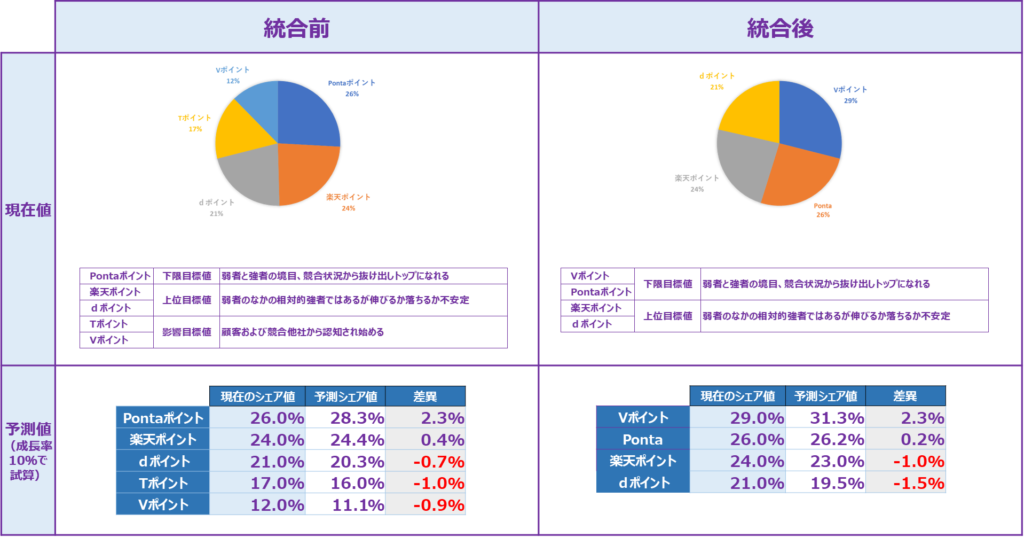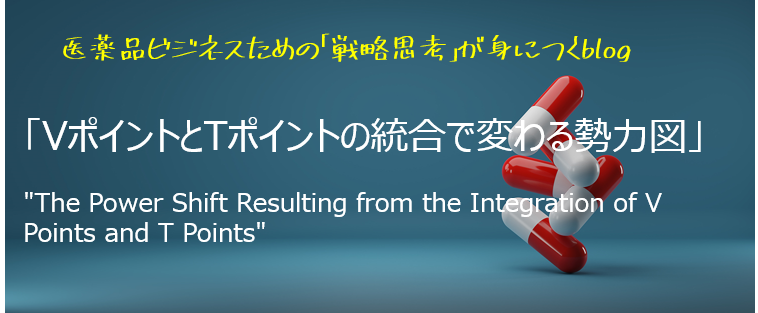
VポイントとTポイントの統合が発表されましたが、なぜこのような動きが生じるのでしょうか?
プレス発表では、よりユーザーが利用しやすくすることが目的とされていますが、企業活動としてはそれだけではないはずです。
マーケットシェア理論からこの統合劇を検証してみましょう。
統合の前後でシェア値の変化を比較してみました。
統合前の会員登録数ではPontaポイント、楽天ポイント、dポイントの3強型競争市場を形成しつつあり、このままではVポイントとTポイントは競争から脱落する可能性が非常に高い状況にあります。
しかし、VポイントとTポイントが統合すれば再び分散型競争市場となり、脱落の危険性は低くなります。
さらに、来期の市場成長率を10%と仮定した場合、1位のVポイントは2位のポンタポイントに差をつけることが出来ます。
市場ライフサイクルでは、脱落しないために常に上位2位までにランクインすること、自社の下位に位置する競合他社を射程距離圏外に突き放す必要があります。
今回のVポイントとTポイントの統合は生き残りをかけた起死回生の切り札と言えるでしょう。
“The Power Shift Resulting from the Integration of V Points and T Points”
The integration of V Points and T Points has been announced, but why is such a move occurring?
In the press release, the purpose is stated as making it more convenient for users, but as a business activity, there should be more to it than just that.
Let’s examine this integration drama from the perspective of market share theory.
I compared the changes in market share value before and after the integration.
Before the integration, the number of registered members formed a three-way competitive market among Ponta Points, Rakuten Points, and d Points, and there was a very high possibility that V Points and T Points would be eliminated from the competition.
However, if V Points and T Points integrate, it will once again become a decentralized competitive market, reducing the risk of elimination.
Furthermore, assuming a market growth rate of 10% for the next period, V Points, as the leader, will be able to widen the gap with Ponta Points, which is in second place.
In the market lifecycle, it is necessary to always rank within the top two positions to avoid elimination and to keep rival companies that are lower in rank out of range.
The integration of V Points and T Points can be considered a desperate and decisive measure for survival.

